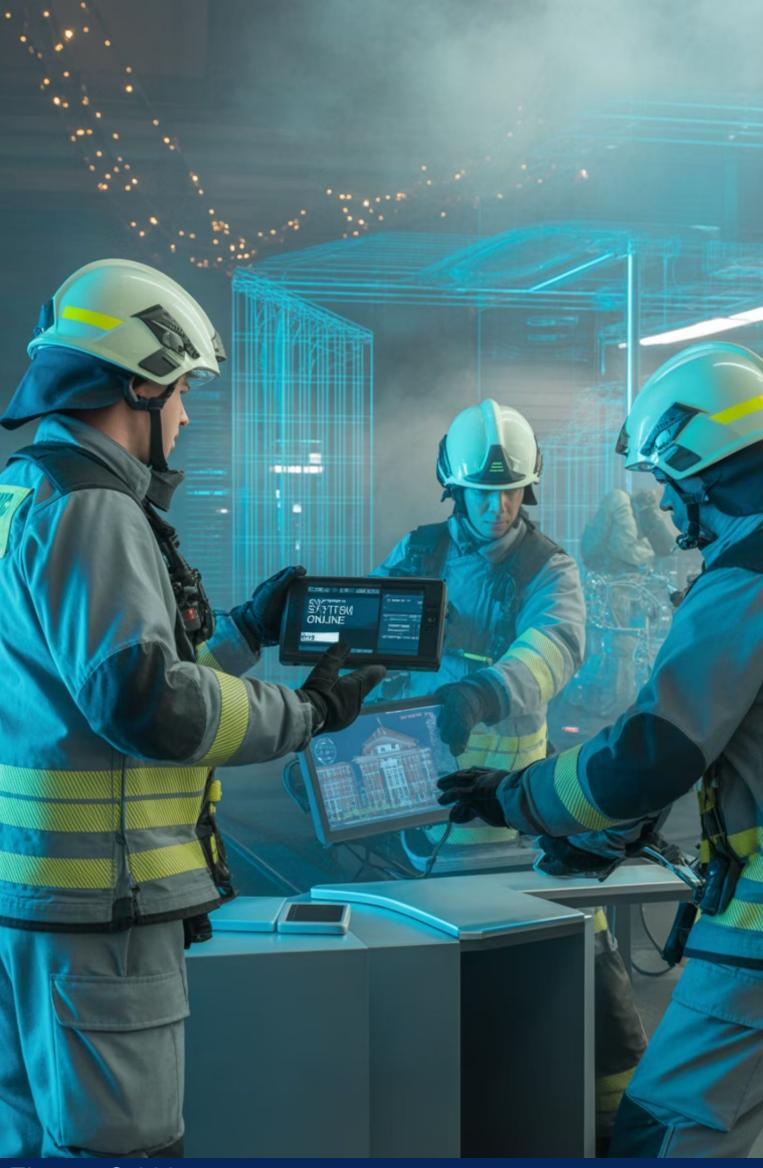Stakeholder Requirements
Operational Effectiveness
1. Fire Response Performance
- Reduce initial response time to under 5 minutes for any new fire detection
- Achieve containment of 90% of fires within first hour of detection
- Demonstrate 80% reduction in acres burned compared to traditional methods
- Maintain effectiveness in diverse terrain and weather conditions
2. Command & Control Excellence
- Enable informed decisions within 30 seconds of situation changes
- Achieve 99% commander satisfaction with system recommendations
- Maintain complete operational visibility across all assets
- Demonstrate seamless integration with existing fire response protocols
3. Safety & Trust Metrics
- Zero safety incidents due to system malfunction
- 95% confidence level in AI-generated recommendations
- Complete system state transparency at all times
- Successful emergency takeover in under 2 seconds
Technical Validation
4. Autonomous Capabilities
- Coordinate minimum 50 autonomous platforms simultaneously
- Maintain sub-second response to environmental changes
- Achieve 99.9% success rate in collision avoidance
- Demonstrate autonomous re-planning within 3 seconds of disruption
5. System Resilience
- Continue core operations with 30% of nodes offline
- Maintain communication links in severe weather conditions
- Auto-recover from 95% of system disruptions
- Preserve critical functions during partial system failures
6. Scalability Benchmarks
- Support linear performance scaling up to 200 platforms
- Handle operations across 100,000+ acre engagement zones
- Process 10,000+ sensor inputs per second
- Maintain performance metrics at 200% baseline load
Stakeholder Acceptance
7. Fire Service Integration
- Full compatibility with existing command structures
- Seamless integration with current firefighting resources
- Intuitive operation by fire service personnel
- Clear demonstration of operational value
8. Community Impact
- Measurable reduction in property damage
- Decreased evacuation response times
- Improved public safety outcomes
- Positive environmental impact assessment
9. Resource Efficiency
- 50% reduction in personnel exposure to danger
- 30% improvement in resource utilization
- Demonstrable cost-effectiveness vs. traditional methods
- Reduced logistical overhead
Validation Standard: “The system must demonstrate clear superiority to current methods while maintaining absolute trust from fire service professionals and the communities they protect.”
These criteria are validated through the Testing Environment and Environment Simulation platforms. See Operational Scenario for how the system meets these requirements in practice, and System Requirements for the technical specifications that enable success.
